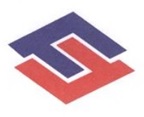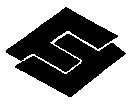|
Trademarks |
|
|
|
I. |
How does the IP Court identify evidence of trademark use in practice? |
|
|
Trademark at issue: “  ” (Reg. No. 01033546) ” (Reg. No. 01033546)
Trademark Owner: FORMOSA AUTOMOBILE CORPORATION
|
|
|
Designated goods: |
Automobiles; Vans; Jeep; Stage wagon; Bodies for vehicles; Rims for vehicle wheels; vehicle steering wheels; Transmission shaft; Driving motors for land vehicles; Windscreens; Car engine; Electric vehicles; Electricity-driven motorcycle; Vehicle transmission; Catalytic converters; Vehicle suspension device; Vehicle anti-lock braking system (ABS); Bicycles; Steamship; Aeroplanes. |
|
|
A Chinese company, Beiqi Foton Motor Co., Ltd., filed a revocation against the trademark Reg. No. 01033546 “ ” (hereinafter “the trademark at issue”) based on the ground of non-use for three years up to Taiwan Intellectual Property Office (TIPO). ” (hereinafter “the trademark at issue”) based on the ground of non-use for three years up to Taiwan Intellectual Property Office (TIPO).
|
|
|
TIPO affirmed the revocation so that the said registration was cancelled. However, after the trademark owner of the trademark at issue (hereinafter “the Plaintiff”) filed an administrative litigation up to the IP Court, the IP Court revoked TIPO’s decision. From the decision made by the IP Court, we are able to know how the IP Court identifies evidence of trademark use in practice. The followings are main points where the IP Court holds different viewpoints from TIPO on this case.
|
|
|
|
1. |
Can it be regarded as the legitimate use of a trademark when the trademark at issue is adhered to products by adhesive labels? |
|
|
TIPO |
IP Court |
|
No, it can’t because adhesive labels may be adhered to the products any time. |
|
Yes, it can because: |
|
(1) |
The shock absorbers and transmission shafts are mental castings made of firm and solid material. Model numbers are hard to be imprinted thereon, so it’s feasible to adhere labels to the products. In addition, both the shock absorbers and transmission shafts are placed inside the body of cars, but not what consumers can see from the appearance of cars. Therefore, whether to imprint dates and model numbers on the shock absorbers and transmission shafts is the cost consideration which the manufacturers have to take into account. |
|
(2) |
The Plaintiff submitted the photos of the shock absorbers bearing the model number of “YAKZ000000000A”. From the copies of delivery lists, invoices and order forms submitted by the Plaintiff’s subsidiary company, those documents recorded the same model number “YAKZ000000000A” for a batch of vehicle parts, so they can mutually prove the correspondence among them. |
|
|
2. |
Can the use of the trademark at issue on “wheel cover, shock absorbers, oil core, valve cover gasket, eccentric shaft seals, timing belt and assembly of rear shock absorbers” be regarded as the use of the trademark at issue on the designated goods? |
|
|
TIPO |
IP Court |
|
No, it can’t because those goods are not parts of the designated goods. |
Yes, it can. Those goods are general and essential components of vehicles so they fall in the scope of the designated goods of the trademark at issue. |
|
3. |
Can the combination use of “  ” (the trademark at issue) and “FORMOSA” (another trademark owned by the Plaintiff) be regarded as the legitimate use of the trademark at issue? ” (the trademark at issue) and “FORMOSA” (another trademark owned by the Plaintiff) be regarded as the legitimate use of the trademark at issue? |
|
|
TIPO |
IP Court |
|
No, it can’t. The overall impression gives a combination trademark consisting of foreign languages and a device, which is different from the trademark at issue, a sole logo. There is no identity between the trademark at issue and the combination. |
Yes, it can.
The word “FORMOSA” is the main portion of the Plaintiff’s company name. The purpose of using the word “FORMOSA” together with the trademark at issue is to strengthen the identification of the source of the goods, and enable related consumers or manufacturers to recognize the trademark at issue and the Plaintiff easier. Therefore, the combination use of “  ” and “FORMOSA” can connect related consumers with the trademark at issue so as to identify the source of goods. ” and “FORMOSA” can connect related consumers with the trademark at issue so as to identify the source of goods.
|
|
|
|
|
II. |
There is still the probability for two trademarks to be deemed similar even though their designated goods/services belong to different classes.
|
|
|
If goods have the same marketing channels or services are provided at the same locations, it is more likely that they will cause confusion as there is a higher probability that relevant consumers will come across them simultaneously.
Under the foregoing condition, two trademarks may be still deemed similar even though their designated goods/services belong to different classes. Here are some samples below.
|
|
|
Case 1:
|
|
|
|
Trademarks in conflict |
 |
 |
|
I.C. |
26 |
10 |
|
Goods/Services in conflict |
Pacifier chain clip |
Pacifiers for babies; Soother |
|
Reasons sustained by MOEA No.09306211210 |
The function of a “pacifier chain clip” is to assist a “pacifier” being worn on a baby to avoid losing the pacifier. The “pacifier chain clip” and the “pacifier” are complementary goods in function and usage. Both pacifier chain clip and pacifier are goods which consumers who have babies must buy or must know, especially for housewives. And, they are usually displayed in the same venue for sale, such as baby specialty stores, department stores and baby specialty departments in shopping malls, etc. |
|
|
|
Case 2: |
|
|
|
Trademarks in conflict |
 |
 |
|
I.C. |
16 |
09、37 |
|
Goods/Services in conflict |
Inking ribbons; Carbon ribbon for typewriter; Carbon ribbon for printer; Inking ribbons for printers; Copying paper; Fax paper; Paper for ink jet printer; Carbon ribbon and ink for computer; Paper and office requisites, etc. |
Telephone apparatus; Facsimile machines; PBX; Computer keyboards; Printers for use with computers; Computer memory; Mouse; Laser printer; repair of computer hardware, etc. |
|
Reasons sustained by MOEA No.09506177510 |
Both goods and services complement each other very closely in functions, usage, manufacturers, marketing channels or locations. They can jointly satisfy customers’ specific demands. According to general concepts prevailing in the society or trading situations in the marketplace, it will likely cause consumers to misidentify them as goods/services from the same source, or different but related sources. Thus, these goods and services are deemed to have a similar relationship. |
|
|
|
Case 3: |
|
|
|
Trademarks in conflict |
 |
 |
|
I.C. |
09 |
18 |
|
Goods/Services in conflict |
Mobile phone pouch made of leather |
Wallet; Purse, etc. |
|
Reasons sustained by MOEA No.09106129090 |
Both goods have common aspects in raw materials and manufacturers.
A mobile phone pouch made of leather belongs to accessories of mobile phones. It is generally sold in the same locations as mobile phones. However, it is also common to find a mobile phone pouch made of leather in locations where wallets and purses are sold, no matter whether it is sold in collocation with a purse or individually. Although the target consumers for the mobile phone pouch are those who carry mobile phones, it is not easy to distinguish consumers using mobile phones from those buying wallets and purses because people carrying mobile phones is a universal phenomenon in Taiwan. Thus, we cannot say that the marketing channels and locations thereof are different, the chance for relevant consumers to come across them simultaneously is small, or consumers for both goods are different. |
|
|
|
Source: decisions made by MOEA (the superior institution of TIPO) |